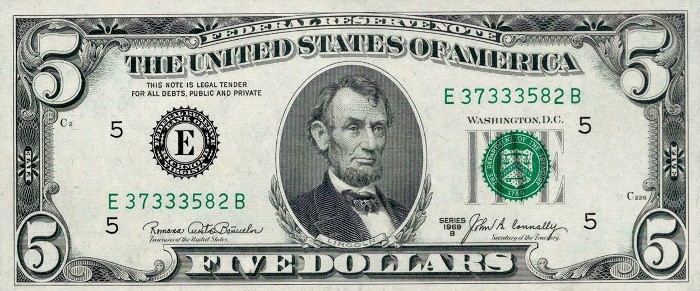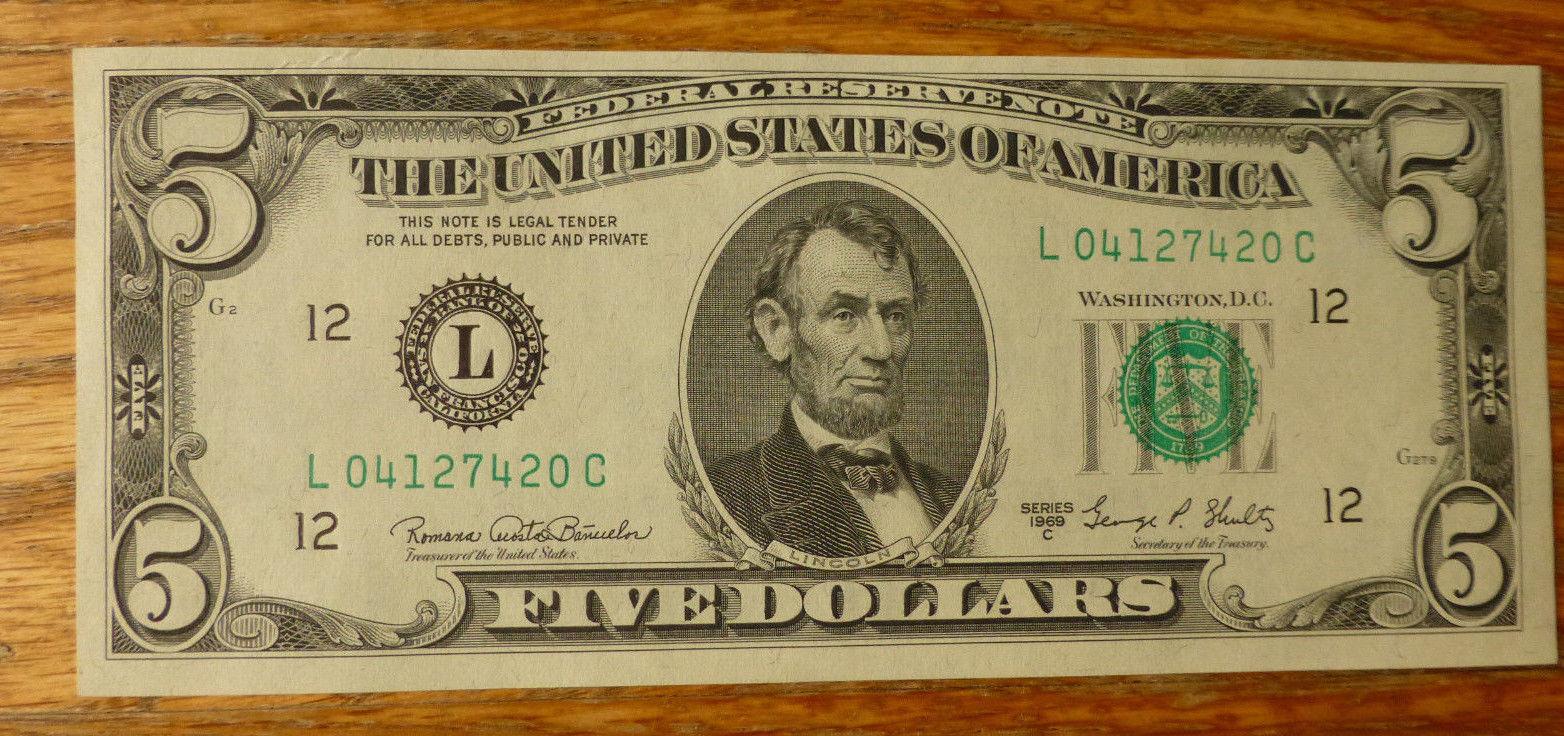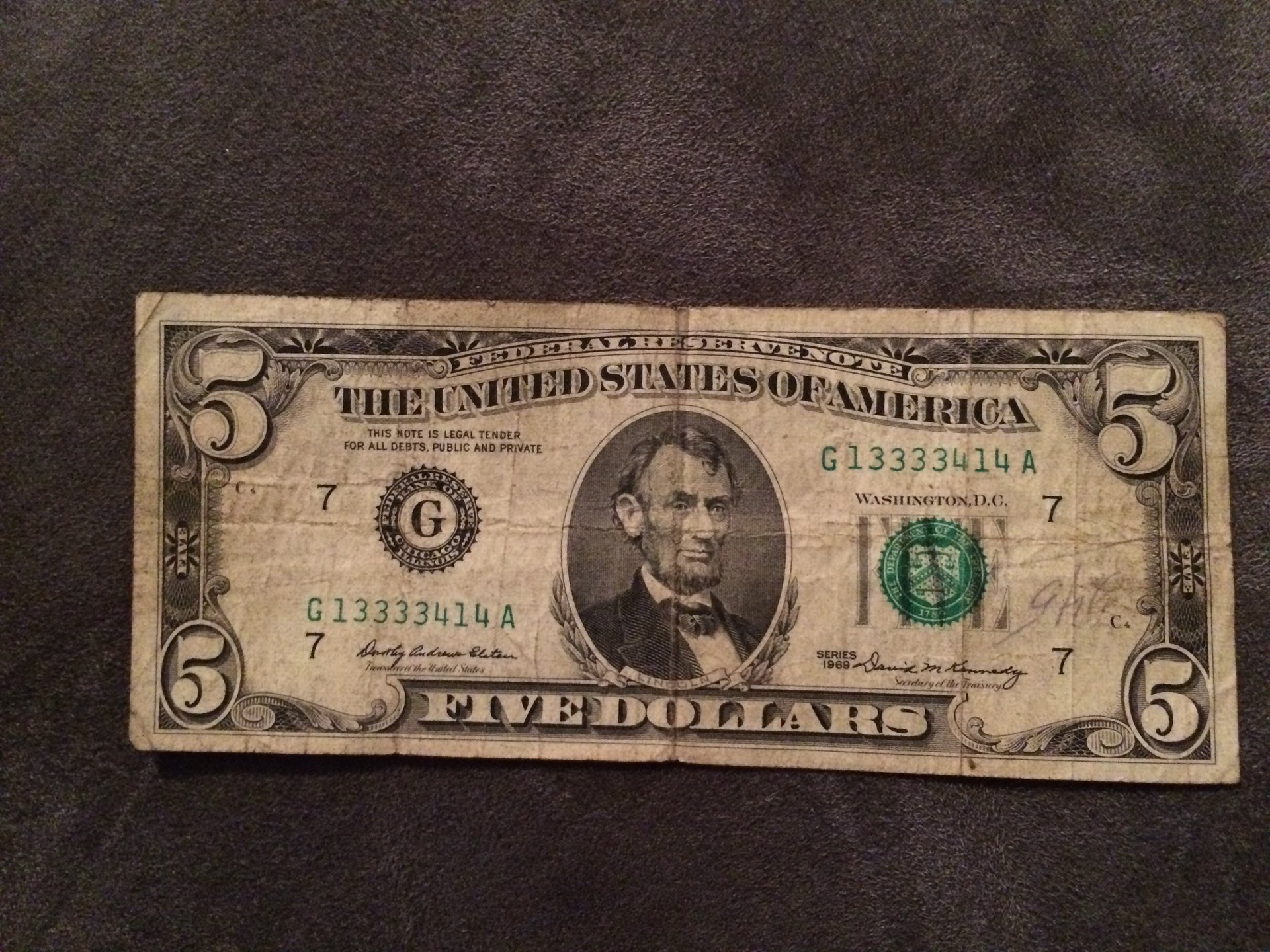If you’ve come across a 1969 $5 bill, you might be wondering, “What is the 1969 5 dollar bill value?” These bills, while not as widely known as older notes like those from the 1920s or 1950s, can still hold significant value depending on the series, condition, and any special features they might have, such as star notes or unique errors.
In this article, we will explore the value of a 1969 $5 bill, including its various series, the factors that affect its worth, and what makes some notes more valuable than others.
So, if you’ve found a five dollar bill from 1969 or are simply curious about its potential value, keep reading!
The Basics of the 1969 $5 Bill
Before delving into the 1969 5 dollar bill value, it’s important to understand the bill’s specifications and the factors that influence its worth. The 1969 $5 bill is part of the Federal Reserve Note series, and it comes in several versions: the 1969, 1969A, 1969B, and 1969C series.

These bills were issued by the United States Treasury and bear the green seal found on most modern U.S. currency.
The 1969 $5 bill features a portrait of Abraham Lincoln on the front and the Lincoln Memorial on the back.
One of the key elements to remember is that the 1969 $5 bill is part of the series of 1969 Federal Reserve Notes, and the value of these bills can vary based on which specific series the bill belongs to.
Additionally, the condition of the bill plays a crucial role in determining its value. Notes that have been well-preserved are worth more than those that have been heavily circulated.
Series Breakdown of the 1969 $5 Bill
The 1969 $5 bill is issued in four different subseries:
- 1969
- 1969A
- 1969B
- 1969C
Each of these subseries carries slightly different values, particularly when it comes to their rarity and condition.
These bills were printed by various Federal Reserve Banks, and bills from certain regions (e.g., Minneapolis) tend to be worth more than others.
The 1969 series bills were printed in large quantities, but the specific subseries and the Federal Reserve District where the bills were issued can impact their worth.
General Value of the 1969 5 Dollar Bill
The 1969 5 dollar bill value will largely depend on its condition and the series it belongs to. As a general rule, most 1969 $5 bills are not worth much more than their face value unless they are in excellent condition or belong to a rare subseries.
1969 Series Bills (Regular): In very fine condition, these bills typically have a value of around $6. In MS 63 uncirculated condition, they can fetch anywhere from $17.50 to $22.50 depending on the specific bill.

1969A Series Bills: The 1969A series is slightly more valuable than the 1969 series. In very fine condition, these bills are typically worth around $8. In MS 63 uncirculated condition, they can range from $20 to $23.
1969B Series Bills: The 1969B series has a higher value due to its relative rarity compared to the earlier series. In very fine condition, these bills are generally worth between $12.50 and $17.50. In MS 63 uncirculated condition, they can be valued between $62.50 and $70.
1969C Series Bills: The 1969C series bills are somewhat less valuable than the 1969B series but still hold some value. In very fine condition, these bills are typically worth around $7. In **MS 63 uncirculated condition, they are worth around $20.
The Impact of Star Notes on the Value of 1969 $5 Bills
One of the most important factors when it comes to 1969 $5 bill value is the presence of star notes. Star notes are replacement bills that the U.S. Federal Reserve prints to replace damaged or misprinted bills. These notes are more rare, and as a result, they are more valuable than regular bills from the same series.
If you have a star note from the 1969 series, its value will likely be higher than the standard bills. The values of star notes are as follows:
1969 Series Star Notes: In very fine condition, these bills typically range in value from $9 to $10. If they are in MS 63 uncirculated condition, the value can increase to between $32.50 and $40.
1969A Series Star Notes: 1969A series star notes are particularly valuable. In very fine condition, they are worth around $17.50, while in MS 63 uncirculated condition, they can be worth about $60.
1969B Series Star Notes: The 1969B series star notes are the most valuable among all the subseries. In very fine condition, these notes are valued between $30 and $37.50. In MS 63 uncirculated condition, their worth can soar to between $175 and $200.
1969C Series Star Notes: These notes are still valuable but not as much as those from the 1969B series. In very fine condition, 1969C series star notes are valued between $22.50 and $27.50. In MS 63 uncirculated condition, they can be worth between $55 and $65.
### How to Determine the Value of a 1969 5 Dollar Bill
To accurately determine the value of your 1969 $5 bill, it’s essential to assess its condition and series. The general grading system for paper currency includes several classifications that help determine a bill’s value:
Very Fine: A bill in very fine condition has been in circulation but not for long. It should still be relatively crisp, with only light creases, folds, or minor smudges. These bills generally have a moderate value.
MS 63 Uncirculated: An MS 63 uncirculated bill shows no signs of ever having been in circulation. It retains its original crispness, is well-centered, and has no significant damage. These bills are worth considerably more than those in very fine condition.
Common Errors on 1969 $5 Bills
Like many older bills, the 1969 $5 bill can sometimes exhibit printing errors that can increase its value. These errors might include misprints, double printing, or other unique mistakes that were made during the production process. If you find a 1969 $5 bill with an unusual error, it could be worth more to collectors.
Some common errors include:
Misaligned Printing: This occurs when one or more elements of the bill’s design are printed off-center. Such errors are typically more noticeable and can raise the bill’s value.
Ink Smears: Sometimes, ink doesn’t dry properly during printing, leaving smears or blurs on the bill. While these errors are not always highly valuable, they can add to the collectibility of the bill.
If you suspect that your 1969 $5 bill contains an error, it’s a good idea to have it professionally authenticated to confirm its rarity and value.
Conclusion: What is the 1969 5 Dollar Bill Worth?
So, what is the final answer to the question, “What is the 1969 5 dollar bill value?” For most 1969 $5 bills, the value ranges from $6 to $20 depending on their series and condition. However, if you have a star note or a bill in uncirculated condition, it can be worth much more. Star notes from the 1969B series, for example, can be worth up to $200 in excellent condition.
Ultimately, the value of your 1969 $5 bill will depend on its series, condition, and whether it contains any rare features such as errors or star notes. If you’re unsure of your bill’s value, it’s worth consulting a professional currency dealer or numismatist to get an accurate assessment.
Whether you’re a collector looking to complete your collection or just curious about the worth of your five dollar bill, understanding the factors that contribute to its value can help you make an informed decision. So, the next time you come across a 1969 $5 bill, take a moment to examine it carefully—you might just have a valuable piece of U.S. currency on your hands!

